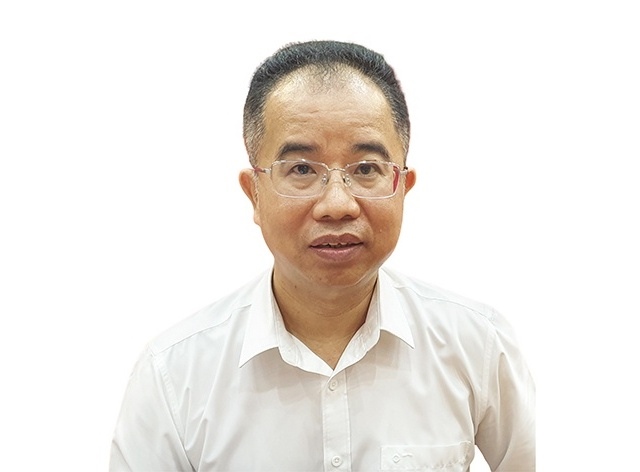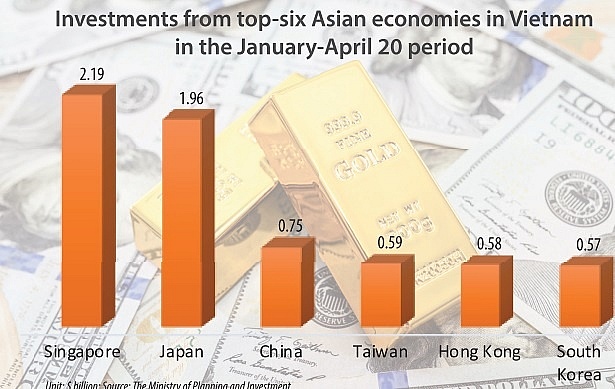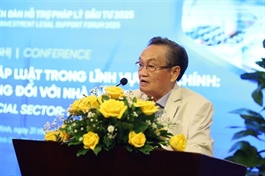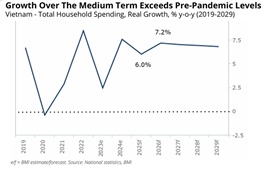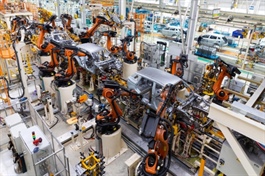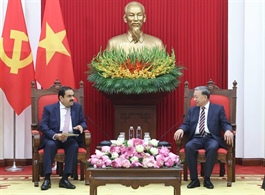Hung Yen offers new space and development momentum following merger
Hung Yen offers new space and development momentum following merger
Post-merger, Hung Yen has synergised its potential and advantages, creating new space and momentum for socioeconomic development.
From July 1, the official merger of Hung Yen and Thai Binh provinces has opened a new development space. The newly formed Hung Yen province now spans over 2,500sq.km with a population exceeding 3.5 million, becoming a major locality in the Red River Delta region.
Previously, Hung Yen had a solid industrial foundation with major industrial parks (IPs) such as Thang Long II IP, Yen My II IP, and IP No. 5, conveniently connected to Hanoi and the northern economic triangle.
Thai Binh, before the merger, had a 52 km long coastline, over 16,000 hectares of tidal flats, and an economic zone spanning more than 30,000 ha, offering great potential for marine economic development.

Over the years, Hung Yen has allocated significant resources to infrastructure development, especially transportation infrastructure. Photo: Pham Dang |
The merger with Hung Yen, a province close to Hanoi and directly connected to key transport routes like national highway 5A, national highway 39A, and the Red River waterway system, creates a tightly linked transportation network.
Hung Yen boasts a compelling road infrastructure, highlighted by arterial routes such as Ring Road 4 around Hanoi, national highway 5, and numerous provincial roads connecting IPs and urban centres. Meanwhile, Thai Binh has undeniable advantages in seaports, waterways, and a dense river system.
Key projects such as the coastal road and the economic zone trunk road have received strong investment.
This combination enables seamless connectivity from the centre to the coast, from roads to waterways, unlocking potential for logistics, seaport services, and high-tech aquaculture.
Strategically located within the Hanoi–Haiphong–Quang Ninh development triangle, the new Hung Yen possesses vast development space and a multimodal infrastructure system, forming a robust development entity.
One of the greatest advantages post-merger is the optimisation of land and labour resources.
Pre-merger, Hung Yen had 17 planned IPs, many of which were already filled, while Thai Binh had abundant land at low cost and a plentiful labour force, especially in the planned coastal economic zone.
This synergy allows for coordinated urban and industrial planning, avoiding overlaps and optimising space and resources.
The chairman of Hung Yen People's Committee has recently approved a $200 million project to build a 25 km road connecting Thai Binh ward to post-merger central Hung Yen.
Once completed, this road is expected to boost trade and socioeconomic development in the new Hung Yen.
According to Vu Quoc Nghi, head of the Management Board of Industrial Parks of Hung Yen, the connection between the two regions creates a central industrial axis from the capital to the sea, forming a diverse IP ecosystem that fully meets supply chain needs in production. This is a major advantage for Hung Yen to attract new-generation FDI.
The merger has enabled Hung Yen to expand its space, connect transport infrastructure, attract investment and resources, and implement more comprehensive planning for key economic sectors.
Golden advantage in marine economic development
Hung Yen now has a coastline of nearly 54 km and over 16,000 ha of tidal flats – a golden advantage for developing seaports, marine farming, and renewable energy.

Ships entering the Diem Dien coastal area for cargo loading and unloading. Photo: Maritime Administration of Thai Binh |
Hung Yen now possesses immense development opportunities, attracting investors with its strategic location in the Hanoi–Haiphong–Quang Ninh economic triangle.
The expanded space gives the province an edge in interregional economic development, creating a central axis from the capital to the sea.
Nguyen Huu Nghia, secretary of Hung Yen Party Committee, stated that the new Hung Yen will develop into a regional industrial hub in the north, aiming to become a centrally governed city.
The former Hung Yen had advantages in urban and industrial development, while Thai Binh had strengths in industry, logistics, and the marine economy. This is a complementary synergy of the two localities’ potentials and values, bringing greater value to Hung Yen’s future.
Hung Yen People's Committee on July 11 held a working session with a Ministry of Construction (MoC) delegation on planning for land and water at Thai Binh seaport.
The session aimed to concretise Prime Minister Pham Minh Chinh’s directives in Conclusion Notice No. 243 dated May 12, assigning the MoC to lead and coordinate with localities and relevant agencies to study and propose investment support for building Diem Dien seaport to accommodate ships up to 200,000 tonnes, and to propose optimal, feasible investment plans.
On May 22, the MoC issued a decision approving the detailed plan for developing land and water areas of Thai Binh seaport.
The plan includes Diem Dien, Tra Ly, and Ba Lat port areas, along with mooring buoys, transshipment zones, and storm shelters.
By 2030, Thai Binh seaport is planned to handle 6.8 to nearly 8 million tonnes of cargo annually, including about 20,000 TEUs of container cargo. The port system is expected to have 10-11 ports with 12-13 wharves.
By 2050, cargo throughput volume at Thai Binh seaport is projected to grow by 5-5.3 per cent annually. The port system will be developed in sync with logistics services and supporting industries, meeting the needs of forming and developing Thai Binh Economic Zone, IPs, and surrounding areas.
During the session, participants discussed and assessed the status and detailed scale of each port area, as well as plans to upgrade shipping channels.
Nguyen Khac Than, chairman of Hung Yen People's Committee, emphasised the province’s goal to expand its marine-oriented economic space, focusing on building Thai Binh Economic Zone into a multi-sector economic development cluster, driving growth for Hung Yen and the country.
He expressed hope that the MoC would continue to support and facilitate Hung Yen in realising these goals based on the approved plan. Hung Yen is committed to closely coordinating with relevant agencies to concretise the plan’s contents and actively attract capable and experienced investors to implement related projects.
Deputy Minister of Construction Nguyen Xuan Sang praised Hung Yen’s vision and direction in developing Thai Binh Economic Zone into a regional economic hub. He affirmed the ministry’s support for the proposal to invest in Diem Dien seaport to accommodate ships up to 200,000 tons, as well as the plan to develop Thai Binh seaport’s land and water areas.
- 09:00 01/08/2025




